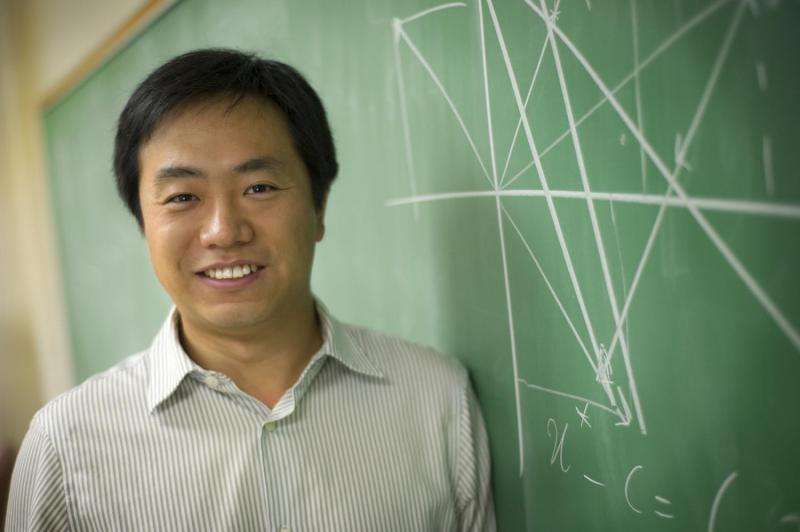UTA engineer developing more precise lung cancer imaging, radiation results

Lung cancer patients know that precise medical imaging can help a surgeon eradicate tumors and preserve healthy tissue.
Current techniques depend on scanning equipment pressed down on a patient's chest that can be uncomfortable at best, and produces images that are expensive to process and may not provide the most accurate depiction of the tumor site.
Researchers at The University of Texas at Arlington and the University of Washington are working on a solution and have developed a new, personalized respiratory-motion system that uses mathematical modeling to capture images of a patient's lung when it is depressed—offering a clearer, more precise image of the tumor to be destroyed.
The work is supported by a three-year, $250,000 National Science Foundation grant and promises to lead to improved, more precise radiation therapy. Shouyi Wang, an assistant professor in UTA's Industrial, Manufacturing and Systems Engineering Department and a data analytics expert, is the principal investigator on the grant.
Wang's approach monitors respiratory gating, or a patient's motion breath-by-breath, and uses the data collected to focus a radiology beam on the targeted area when the chest cavity is relaxed—the stage that provides the best picture of a cancerous site.
"We will develop a powerful new mathematical model that considers different factors and takes into account all of the major variables, and predicts performance and the best method for a particular patient," Wang said. "Respiratory gating is a readily available technology, but it has been very slow to gain acceptance in managing respiratory motion in radiation therapy.
"We are going to build evidence that it works, that it can be better utilized, easily implemented and that it can be cost-effective."
Wang's research has three objectives:
- Create a mathematical model that will predict how likely it is that a patient will benefit from respiratory gating. The model will use data collected by the University of Washington and also will take into account physicians' experiences and prior knowledge.
- Create a personalized motion-management model that takes into account the diagnostic factors for an individual patient.
- Analyze the cost-effectiveness of the gating model and show that hospitals can benefit from this technology and use it to reduce costs.
Wang's collaborators at Washington are the first to try making the best use of the computer-guided respiratory gating method, which has only recently come into practice.
The process is automated with a sensor on the patient's chest or abdomen that sends a signal to start or stop the common positron emission tomography and computed tomography, or PET/CT, scan. The system allows more precise imaging, and eliminates the need for the chest to be compressed. Khosrow Behbehani, dean of the UTA College of Engineering, said Wang's work exemplifies the University's commitment toward advancing health and the human condition—a core theme of the Strategic Plan 2020: Bold Solutions | Global Impact.
"Our work as engineers often allows us to present solutions that improve peoples' quality of life," Behbehani said. "Dr. Wang's research may provide relief to lung cancer patients as they undergo life-saving treatments, greatly reducing discomfort and allowing them to benefit from more effective imaging and therapy that will treat their disease."















